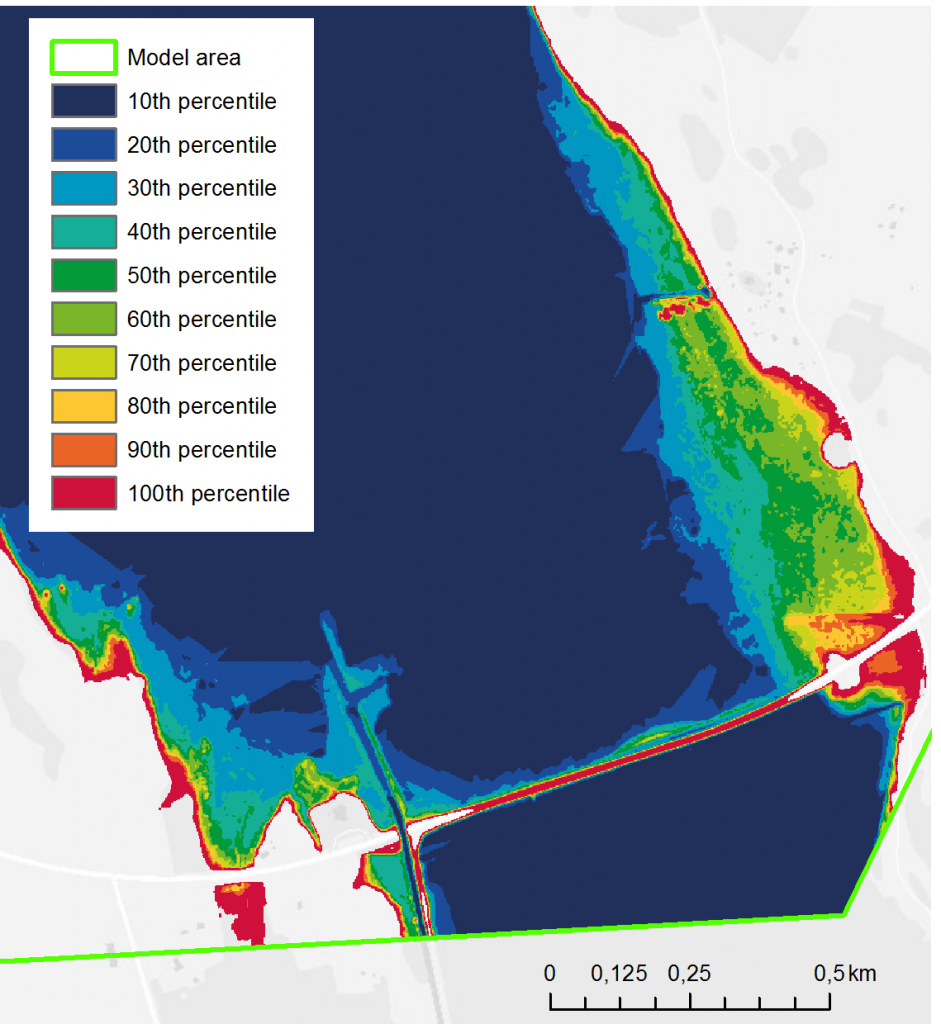Copyright © The RAS Solution 2018. All rights reserved
Take a look at the water surface profile in Figure 1 below.
The two profiles are for Class A low flow (subcritical throughout) with
identical boundary conditions, flow conditions, and geometry. The only difference
is the bridge modeling approach: the blue line is calculated using the energy
method; the red line is calculated using the momentum method. For this example,
which is a simple rectangular channel, the difference in computed water surface
elevation and energy grade line from the downstream cross-section to the
upstream cross-section is 0.10 feet and 0.16 feet for the energy method,
respectively; those differences increase to 1.64 feet and 1.64 feet,
respectively, for the momentum method. Those of you well-versed in the
applicability of the various bridge modeling approaches (see page 181 of the HEC-RAS River Analysis System, version 5.0,
Hydraulic Reference Manual [Brunner,
2016] for a great discussion on this topic), will answer: “the momentum method
accounts for the drag imparted by bridge piers on the flow and should be used
when pier losses are significant; that’s why.” But check out Figure 2. There
are no piers. The bridge doesn’t even touch the water surface!
Figure 1: Comparison
of bridge modeling results between energy and momentum methods
Figure 2:
Representative cross-section of modeled bridge
From a hydraulic perspective, the bridge is doing nothing in
this model. We could ignore it, stick in two cross-sections, press “run”, use
the tried-and-trusted energy equation, and be on our way. However, “momentum”
has been as familiar and comfortable a term as “energy” ever since we first
smashed two model cars in physics class. We know the one-dimensional form of
the conservation of momentum equation backwards-and-forwards, have solved the
above problem by hand in our open channel hydraulics class, and know that the
momentum equation should give us an answer similar, if not identical, to the
energy equation. Even though the title of this post gives away the reason for
the difference, I’m going to let the suspense build and provide some background
to understand the implementation of the momentum equation in HEC-RAS at bridges
for steady discharge.



